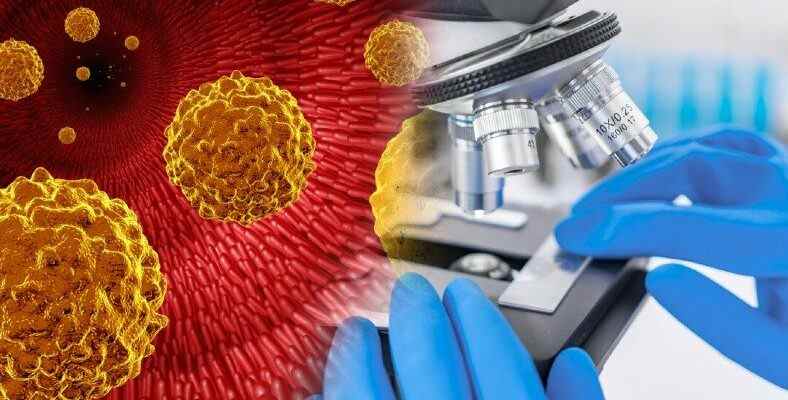Biopsy, which is a method used in the detection of cancerous tissue, is known to be a painful and challenging process as much as it is necessary for the patient. However, with a newly developed device, the need for biopsy seems to be largely eliminated.
It can be defined as taking a skin sample from a person to be examined under a microscope in a laboratory environment. biopsyIt is known as an extremely important operation in terms of early cancer diagnosis. However, this process is quite difficult for patients as it leaves deep wounds that take weeks to heal. bitter and tasteless.
On the other hand, the number of biopsies performed in recent years is approximately higher than the number of detected cancers. four times more it is quite noticeable. This means that even people who are not actually at risk of cancer have to have a biopsy to be sure. However, it seems that with a newly developed device, unnecessary biopsies and the painful process that comes with it. avoid it could be the subject.
With the new device, cancerous tissue can be detected without the need for biopsy.
Stevens Institute of Technology researchers now reduce the rate of unnecessary biopsies. in half and at the same time provide dermatologists and other frontline physicians with easy access to laboratory-level cancer diagnosis. a low cost handset is developing. Negar Tavassolian, director of the Bio-Electromagnetic Laboratory in Stevens, said their main goal was not to get rid of biopsies. “But we want to provide doctors with additional tools and help them make better decisions.” saves as.
The device in question, developed by the team, is the same technology used in airport security scanners to scan a patient’s skin. millimeter wave imagingtakes advantage of. According to this working principle, healthy tissue reflects millimeter wave rays differently from cancerous tissue. This is done by monitoring the contrasts in the rays reflected back from the skin. detecting cancers That means it’s theoretically possible.
Researchers wanting to bring this approach to clinical practice are also looking to combine signals captured by multiple different antennas into a single ultra-high-bandwidth image, reducing noise and minimizing noise. high resolution images of even the spot or speck They used algorithms to catch up quickly.
Using a desktop version of their technology to study 71 patients during real clinical visits, the research team led by Amir Mirbeik found that their method was able to detect benign and malignant lesions in just seconds. correctly He found that he could distinguish Tavassolian and Mirbeik, using their device, cancerous tissue 97% sensitivity and with 98% specificity They were able to identify a ratio that, it’s worth mentioning, to compete with even the best hospital-level diagnostic devices.
Team develops low-cost ‘biopsy’ alternative that’s easy to access and use

In a statement about the work “There are other advanced imaging technologies that can detect skin cancers, but these are large, non-clinical, expensive machines” Tavassolian using the expressions, “As small as a mobile phone and easy to use, low cost We’re creating a device so we can deliver advanced diagnostics that everyone can access.” he adds.
The fact that the team’s technology delivers results in seconds means that it could one day be used instead of a magnifying dermatoscope for routine checkups, and almost instantly. extremely accurate shows that it can produce results. Related to this, Tavassolian “This means that doctors can integrate accurate diagnoses into routine checkups and ultimately more patients means it can cure voicing his words.
Unlike many other imaging modalities, at about 2 mm to human skin harmless The new imaging technology, using penetrating millimeter-wave beams, provides a clear 3D map of scanned lesions. With some improvements to the algorithm that powers the device, it may be possible to significantly improve the mapping of lesion boundaries and to perform more precise and less extensive biopsies for malignant lesions.
The team plans to launch the device within two years

At this point, the next step to be taken stands out as the team’s placement of the diagnostic kit in an integrated circuit. With this step taken, it will soon be possible to see functional handheld millimeter wave diagnostic devices per piece. 100 dollars may be produced at such a low price. The team is currently working on commercializing their technology and is deploying their devices in the future. in two years hopes to start delivering it into the hands of clinicians.
RELATED NEWS
‘Vital’ Explanation That Closely Interests All Women: A Single Dose of HPV Vaccine is Enough to Prevent Cervical Cancer!
“The way forward is clear and we know what we have to do” Tavassolian states, “After this proof of concept, we our miniaturizationprice we drop And we need to get it to market.” saves as.
Source :
https://scitechdaily.com/bye-bye-biopsy-handheld-device-with-new-imaging-tech-to-painlessly-identify-skin-cancers/
